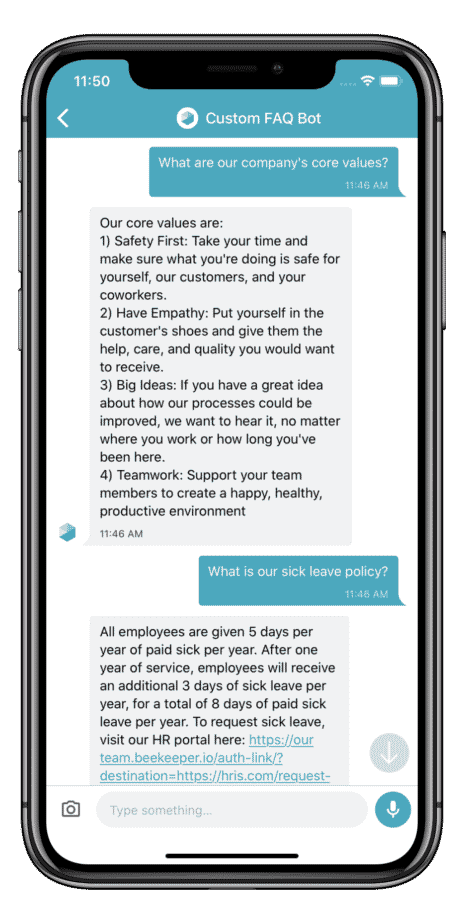3 Ways to Use Value Alignment to Increase Business Success

In any business, there is a common goal that every employee—from the C-suite to the frontline—is working towards. The only way for a company as a whole to be successful is to achieve value alignment across everyone in the organization.
Download our action plan and communicate your company’s core values to your team.
According to a Glassdoor survey, values and culture top the list of job satisfaction factors. So increasing your employees’ awareness of value alignment will give them a deeper sense of purpose in the workplace. This connection inevitably leads to increased engagement.
Here are the best three ways to use value alignment to increase employee engagement, boost job satisfaction, foster positive relationships, and achieve your business goals.
1. Start at the Top With Company Value Alignment
Leaders should always ask themselves “what are the core values of my organization?” They should have a firm grasp of those core values. If leaders of the company don’t appear to believe and exhibit company values, employees won’t either. Leaders need to authentically embody the core values they want in their organization and their team.

Company values should be more than a few sentences on a website. Leaders should provide an example of what the company represents. If serving the community is an important value to the company, executives should organize company community service events with the rest of the employees.
The four steps in top-down value alignment include:
- Know your core values
- Model those values
- Communicate your values
- Celebrate those employees who live the company’s core values
When employees understand their company’s value set, they have a clearer path of how to perform their job. They become better problem solvers, more autonomous, and more productive. In short, they become an empowered, engaged workforce.
Pro tip: Make sure your managers are aligned with your core values. They’ll directly impact value alignment with their employees.
2. Align Employee Engagement to Values Through Recognition
One of the biggest reasons employees feel disconnected from their employers is not understanding the part they play in a company’s mission. Workers often want to know, “what value do I bring to the company?” It’s your job to let them know.

One of the best ways to ensure the alignment of personal and organizational core values is to recognize employees who exemplify those company values.
Recognition can come in many forms. Some ideas include:
- Mentions: Employees who appreciate and display company values should be publicly recognized in company-wide communication. You can do this through an employee app like Beekeeper, in a company newsletter, in an email, or give them public praise during a staff meeting.
- Rewards: Consider giving small bonuses. The bonus doesn’t always have to be monetary. It could be a bonus vacation day or a special parking spot.
- Promotions: Look at exemplary employees as the future leaders of your business. It’s always best for organizations to hire and promote from within. Employees who embrace and model values have the tools to support your mission and grow in your organization.
Recognizing those stellar employees who demonstrate company values will inspire others to embrace those values, too.
3. Evaluate, Redefine, and Adapt Values on a Regular Basis
It may sound counterintuitive, but if company values seem too far from team values, it might be time to redefine them. As a leader, you need to be agile and adaptable. That means routinely evaluating your company’s values to ensure they are relevant to your organization and your objectives. It’s also an effective way to improve company culture.
One company took value alignment and assessment one step further. Aetna, the healthcare company, decided to solicit internal feedback directly from employees in order to guide the updates they made to the company values. By bringing employees into the process, they became more invested in the company’s values and their work. Employees were able to feel truly engaged and understand how the company values impact them.
It’s important for employees to buy into company values. According to Gallup, only 27% of employees feel strongly about the values of their employer.
Sourcing valuable feedback from your employees will:
- Increase feelings of inclusion
- Create a more well-rounded value set from a diverse group of people
- Build employee engagement and positive relationships by creating a sense of ownership over their culture
- Boost job satisfaction
While there are many ways of increasing employee engagement, striving for value alignment, or aligning company values with team values, may very well be one of the most effective methods.
Download our free action plan to communicate your company’s core values to your team and increase employee engagement.
Get the Action Plan
Most Frequently Asked Questions
What is the importance of values and values alignment?
If values are not aligned, people work toward different goals. Having the same goals helps to achieve a common purpose.
How do you align organizational values?
- Start at the Top With Company Value Alignment
- Align Employee Engagement to Values Through Recognition
- Evaluate, Redefine, and Adapt Values on a Regular Basis
What does alignment really mean?
Values alignment means making sure that everyone has the same values and understands how their goals help the organization to succeed.
About the author
Cristian Grossmann
CEO and Co-Founder, Beekeeper
Cris is CEO and Co-Founder of Beekeeper, an award-winning digital workplace app that digitizes the non-desk workforce in 137+ countries by connecting operational systems and communication channels within one intuitive platform. Beekeeper helps companies increase performance and productivity, enhance employee engagement, reduce turnover costs, and elevate corporate culture. Prior to founding Beekeeper, Cris worked for Accenture on high profile international projects in the field of IT Strategy for the financial and public sectors. Cris studied Chemical Engineering and got his Ph.D. in Electrical Engineering, both at ETH Zurich. Before moving to beautiful Zurich, Cris was born and raised in an entrepreneurial Swiss-Mexican family in Mexico City.








